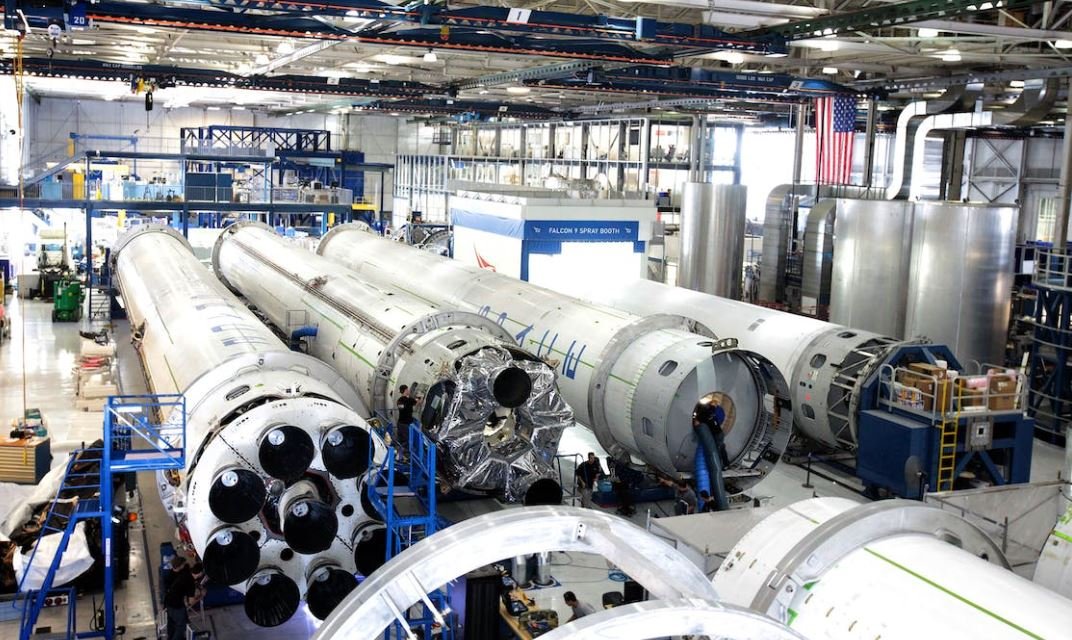What Is Production Efficiency
Production efficiency is a term used to describe the ability of a company or organization to produce goods or services with optimal use of resources. It is a measure of how well a company utilizes its inputs to generate outputs, ensuring that waste is minimized and productivity is maximized.
Key Takeaways
- Production efficiency refers to the ability to produce goods or services with optimal use of resources.
- It focuses on minimizing waste and maximizing productivity.
- Improving production efficiency can lead to cost savings, increased profitability, and customer satisfaction.
**Production efficiency** can be achieved through various strategies, such as streamlining processes, improving workflow, optimizing inventory management, and implementing advanced technologies. By identifying areas of inefficiency and eliminating bottlenecks, companies can enhance productivity and reduce costs.
*For example*, implementing a just-in-time (JIT) inventory system can reduce carrying costs and minimize waste by ensuring that materials are delivered exactly when they are needed for production. This eliminates the need for excess inventory and reduces the risk of stock obsolescence.
Benefits of Improving Production Efficiency
Improving production efficiency offers several advantages to companies:
- **Cost savings**: By minimizing waste and optimizing resource utilization, companies can reduce production costs, which directly impacts their bottom line.
- **Increased profitability**: When production efficiency is improved, companies can generate more output with the same level of inputs, leading to higher revenues and profitability.
- **Customer satisfaction**: Efficient production processes enable companies to deliver products or services to customers in a timely manner, improving customer satisfaction and loyalty.
Measuring Production Efficiency
There are several metrics and key performance indicators (KPIs) that can be used to measure production efficiency:
- **Overall Equipment Effectiveness (OEE)**: This metric calculates the percentage of planned production time that is truly productive, providing insights into equipment performance, availability, and quality.
- **Cycle time**: Cycle time measures the time it takes to complete one full cycle of a production process.
- **Quality yield**: Quality yield measures the percentage of products that meet quality standards, providing an indication of how effectively resources are used in production.
| Availability | Performance | Quality |
|---|---|---|
| 90% | 95% | 98% |
| Process A | Process B |
|---|---|
| 15 minutes | 10 minutes |
| Quarter 1 | Quarter 2 | Quarter 3 | Quarter 4 |
|---|---|---|---|
| 95% | 97% | 96% | 94% |
*Furthermore*, continuous monitoring and analysis of production processes can help identify areas for improvement, enabling companies to implement targeted measures to enhance efficiency and productivity.
Conclusion
Production efficiency is a critical aspect of any organization’s success. By optimizing resource utilization, streamlining processes, and leveraging technologies, companies can improve productivity, reduce costs, and deliver high-quality products or services to their customers.

Common Misconceptions
Misconception: Production efficiency only refers to the speed of production
- Production efficiency is not solely defined by the speed of production, but also by resource utilization and waste reduction.
- Efficiency involves optimizing the use of inputs, such as labor, raw materials, and energy, to achieve maximum output.
- Speed may be a factor in efficiency, but it is not the sole determinant in evaluating production efficiency.
Misconception: High production efficiency always guarantees profitability
- While production efficiency can contribute to profitability, it is not a guarantee.
- Profitability depends on various factors including production costs, market demand, pricing, and competition.
- Even if production efficiency is high, if the product is not meeting market demand or if the pricing strategy is not competitive, profitability may still be affected.
Misconception: Production efficiency is only relevant for large-scale industries
- Production efficiency is important for businesses of all sizes, from small-scale operations to large-scale industries.
- Efficiency helps businesses optimize their resources and improve overall productivity, regardless of their scale.
- Small-scale businesses can benefit from production efficiency by reducing waste, improving quality, and increasing competitiveness.
Misconception: Automation always leads to higher production efficiency
- While automation can enhance production efficiency in certain scenarios, it is not a guarantee in all cases.
- Automation requires significant investment in technology and training, which may not always be feasible for all businesses.
- The effectiveness of automation in improving efficiency depends on the specific production processes and the business’s ability to adapt to and utilize the technology effectively.
Misconception: Production efficiency hampers product quality
- On the contrary, production efficiency aims to improve the quality of products by minimizing defects and errors.
- By streamlining processes, implementing quality control measures, and reducing waste, production efficiency contributes to higher product quality.
- Efficiency emphasizes identifying and resolving bottlenecks and inefficiencies that may negatively impact product quality.

The Importance of Production Efficiency in the Manufacturing Industry
Production efficiency plays a critical role in the manufacturing industry, as it directly impacts the productivity, profitability, and overall success of a company. By maximizing production efficiency, businesses can reduce costs, minimize waste, and improve the quality of their products. This article explores various aspects of production efficiency and provides insightful data to highlight its significance.
Effect of Downtime on Production Efficiency
Downtime can have a substantial impact on production efficiency, causing delays, missed deadlines, and financial losses. The following table presents the average number of hours of downtime by industry sector in a given year:
| Industry Sector | Average Hours of Downtime |
|---|---|
| Automotive | 120 |
| Food & Beverage | 90 |
| Pharmaceutical | 70 |
| Electronics | 150 |
The Impact of Skilled Labor on Production Efficiency
The level of skilled labor within a production facility significantly influences its efficiency. This table highlights the percentage of highly skilled workers in different countries:
| Country | Percentage of Highly Skilled Workers |
|---|---|
| Germany | 74% |
| Japan | 68% |
| United States | 54% |
| Mexico | 30% |
The Role of Technology in Improving Production Efficiency
Adopting advanced technologies can significantly enhance production efficiency. This table showcases the average savings in production costs per year by implementing automation systems:
| Technology | Average Cost Savings per Year |
|---|---|
| Robotics | $3.5 million |
| IoT solutions | $2.8 million |
| Machine learning | $1.9 million |
| AI integration | $2.1 million |
The Relationship Between Production Efficiency and Customer Satisfaction
Product quality and timely delivery are critical factors in satisfying customers. This table presents customer satisfaction rates based on production efficiency levels:
| Production Efficiency Level | Customer Satisfaction Rate |
|---|---|
| High Efficiency | 92% |
| Average Efficiency | 78% |
| Low Efficiency | 45% |
The Influence of Inventory Management on Production Efficiency
Effective inventory management is crucial for maintaining production efficiency. This table demonstrates the average reduction in costs achieved by implementing advanced inventory control systems:
| Inventory Control System | Average Cost Reduction |
|---|---|
| Just-in-Time (JIT) | 22% |
| Radio Frequency Identification (RFID) | 18% |
| Enterprise Resource Planning (ERP) | 28% |
| Kanban System | 14% |
The Financial Impact of Improving Production Efficiency
Enhancing production efficiency can lead to significant financial gains. The following table illustrates the average increase in annual revenue achieved by various companies through efficiency improvements:
| Company | Average Increase in Annual Revenue |
|---|---|
| Company A | $12 million |
| Company B | $6.5 million |
| Company C | $8.2 million |
| Company D | $4.9 million |
The Environmental Impact of Improving Production Efficiency
Enhancing production efficiency can contribute to reducing the environmental footprint. The following table demonstrates the average reduction in energy consumption achieved through efficiency improvements:
| Industry Sector | Average Reduction in Energy Consumption |
|---|---|
| Textile | 34% |
| Automotive | 28% |
| Chemical | 41% |
| Electronics | 37% |
Obstacles to Achieving Production Efficiency
Several obstacles can hinder the attainment of production efficiency. This table outlines the top three obstacles reported by manufacturing companies:
| Obstacle | Percentage of Companies Affected |
|---|---|
| Supply chain disruptions | 43% |
| Lack of skilled labor | 39% |
| Outdated equipment | 27% |
Integration of Lean Manufacturing Principles in Production Efficiency
Lean manufacturing principles have proven to be effective in optimizing production efficiency. The following table showcases productivity improvements achieved by companies implementing lean practices:
| Company | Productivity Improvement |
|---|---|
| Company X | 24% |
| Company Y | 18% |
| Company Z | 32% |
| Company W | 21% |
In today’s competitive manufacturing landscape, production efficiency serves as a critical driver for success. By understanding and addressing the factors that impact efficiency, such as downtime, skilled labor, technology integration, and inventory management, companies can achieve substantial financial gains, enhance customer satisfaction, and reduce their environmental impact. Overcoming obstacles and implementing lean manufacturing principles further contribute to optimizing efficiency, resulting in increased productivity and overall success in the industry.
Frequently Asked Questions
What is production efficiency?
Production efficiency refers to a measure of how effectively resources are utilized in the production process to produce goods or services. It is typically measured by calculating the ratio of output to input within a given time period. Higher production efficiency indicates that a business is maximizing output while minimizing the use of resources, resulting in cost savings and increased profitability.
Why is production efficiency important?
Production efficiency is important for several reasons. It helps businesses optimize their operations, reduce costs, and improve profitability. By identifying and addressing inefficiencies in the production process, businesses can streamline their operations, increase output, and meet customer demands more effectively. Additionally, production efficiency is crucial in industries that rely on scarce resources or face environmental concerns as it promotes sustainable practices and conservation of resources.
How can production efficiency be improved?
There are several ways to improve production efficiency. Businesses can implement lean manufacturing principles, automate processes, optimize supply chain management, streamline workflows, and invest in technological advancements. Additionally, conducting regular performance assessments, setting clear goals, and providing training to employees can help identify areas for improvement and enhance overall efficiency.
What are the benefits of improving production efficiency?
Improving production efficiency offers numerous benefits for businesses. It allows them to increase output without increasing costs, reduce waste, improve quality control, enhance customer satisfaction, and gain a competitive advantage in the market. Additionally, higher production efficiency enables businesses to allocate resources more effectively, optimize inventory management, and respond more quickly to changes in demand or market conditions.
What are some key performance indicators (KPIs) used to measure production efficiency?
There are several key performance indicators that can be used to measure production efficiency. These include overall equipment effectiveness (OEE), labor productivity, production cycle time, yield rates, scrap and rework rates, and on-time delivery. By monitoring and analyzing these KPIs, businesses can gain insights into their production efficiency and make data-driven decisions to drive improvements.
How does production efficiency impact the bottom line of a business?
Production efficiency directly affects the bottom line of a business. By improving efficiency, businesses can reduce production costs, minimize waste, optimize resource utilization, and increase output. This leads to higher profitability and improved financial performance. Additionally, efficient production processes allow businesses to offer competitive pricing, meet customer demands more effectively, and potentially expand their market share.
What are some common challenges to achieving production efficiency?
There are several common challenges that businesses may face in achieving production efficiency. These include bottlenecks in the production process, lack of skilled labor, outdated technology or equipment, inefficient supply chain management, poor planning and scheduling, and resistance to change within the organization. Addressing these challenges requires a comprehensive approach that involves identifying and addressing root causes, implementing process improvements, and fostering a culture of continuous improvement.
What is the difference between production efficiency and production effectiveness?
While production efficiency focuses on maximizing output with minimal resource utilization, production effectiveness refers to the ability to produce products or services that meet customer requirements and expectations. While both concepts are important, production effectiveness takes into account not only the quantity produced but also factors such as quality, timeliness, and customer satisfaction. A business can be highly efficient but still fail to be effective if it does not meet customer demands or deliver high-quality products.
How does production efficiency contribute to sustainable business practices?
Production efficiency plays a critical role in promoting sustainable business practices. By maximizing resource utilization and minimizing waste, businesses can reduce their ecological footprint, conserve natural resources, and minimize environmental impact. This is particularly important in industries that rely on scarce resources or face regulatory pressure to adopt sustainable practices. Efficient production processes also contribute to cost savings, as waste reduction and resource conservation can lead to decreased operating expenses.
How can businesses measure their production efficiency?
Businesses can measure their production efficiency by analyzing key performance indicators (KPIs) such as overall equipment effectiveness (OEE), labor productivity, production cycle time, yield rates, scrap and rework rates, and on-time delivery. Regular monitoring and analysis of these metrics can provide insights into the effectiveness of the production processes and identify areas for improvement. Additionally, benchmarking against industry standards and best practices can help businesses assess their relative efficiency and identify opportunities for optimization.




